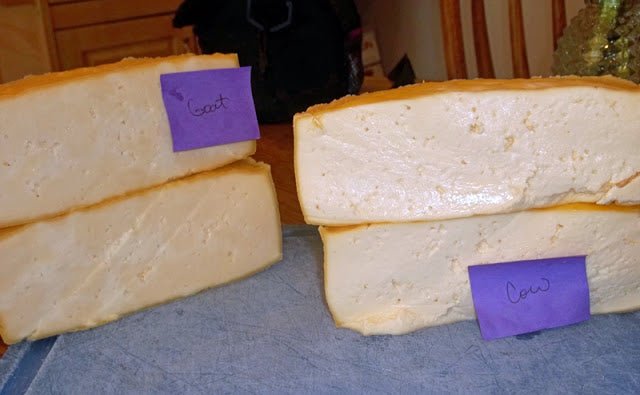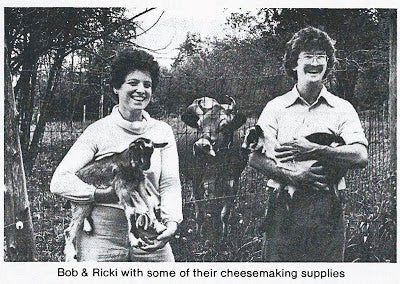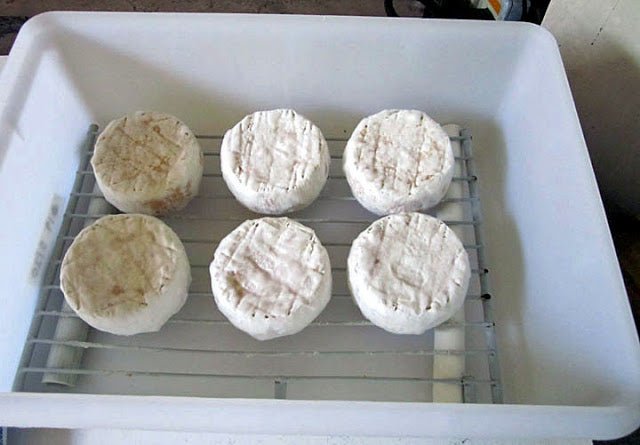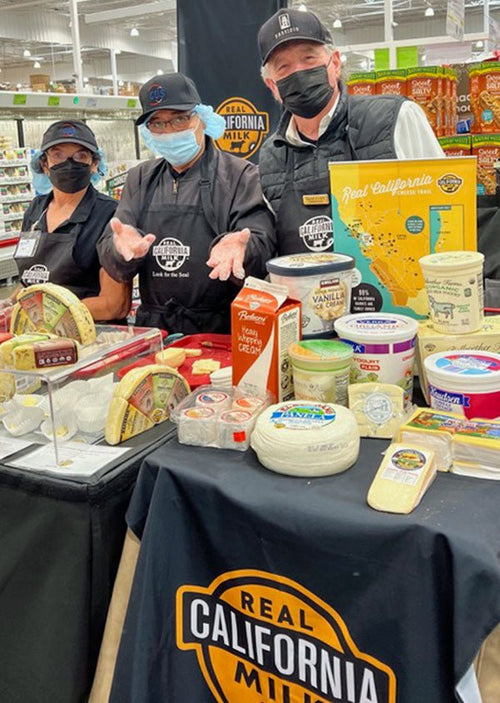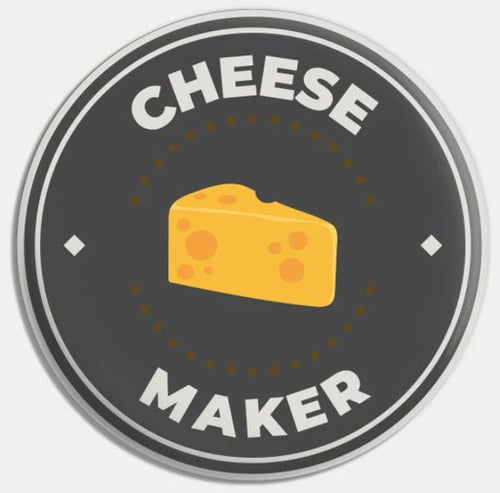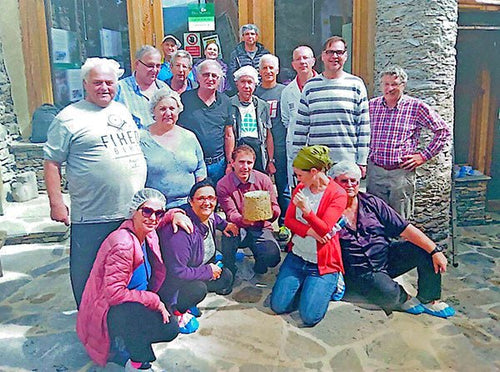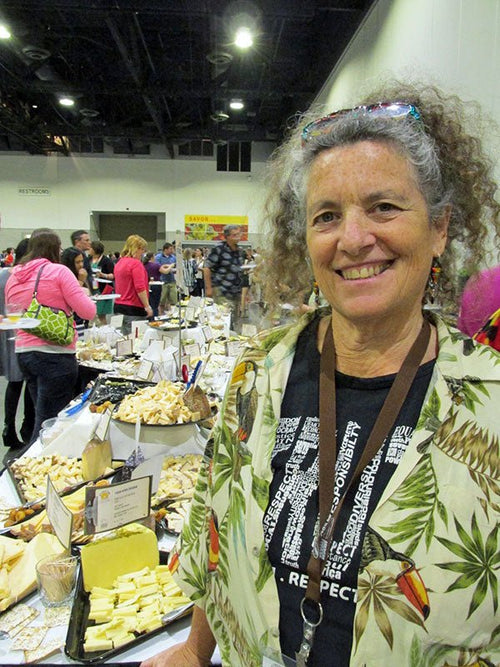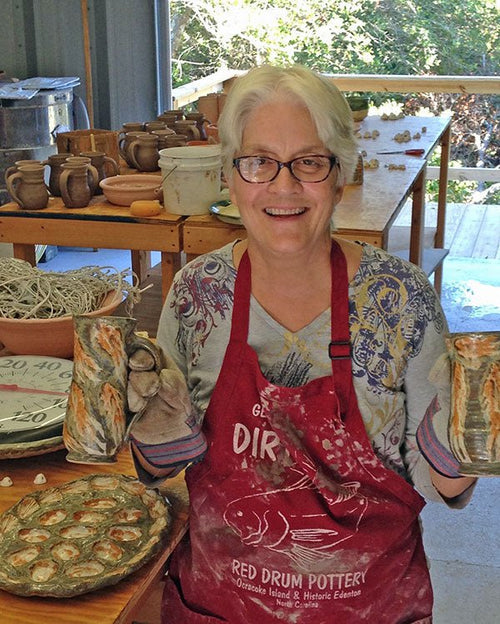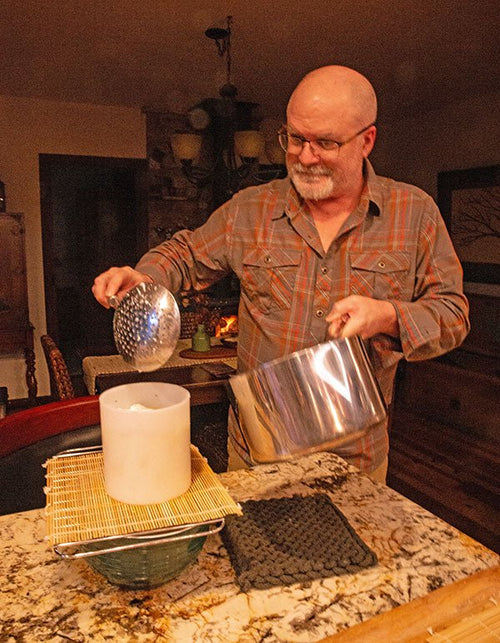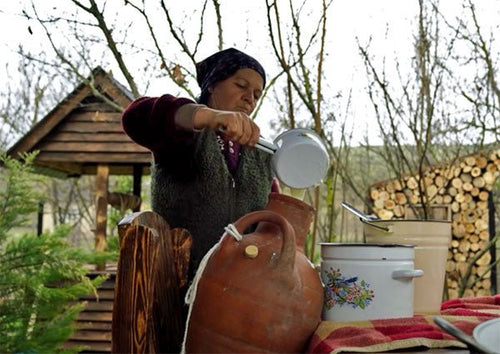It was a year-long quest for answers!
Caroline Abbott used to be an accomplished goat’s milk cheesemaker. All that changed this past year when her cheeses began to develop holes. The events that transpired after that are a testament to her amazing persistence.
2010 was Caroline’s third season making all her own cheese from her own raw goat milk. In 2009, she had finally gotten the bugs worked out of her mesophilic cheeses and they were coming out perfect. Her family particularly likes colby cheese, so she was concentrating on getting that just right. Then, disaster struck!
Caroline’s Story
We are located in Otsego, Michigan, which is in southwest Michigan, between Kalamazoo and Grand Rapids. We are about 30 miles east of Lake Michigan. I have four children, so with my husband and I, there are six of us.
We are milking six does right now. I have four dry yearlings (10 does total), five boys (two bucks and two wethers – castrated males) plus the babies, four of whom we are keeping, two bucks and two does. So, that makes 15 big goats and at the moment 14 babies, but only four will be staying permanently. So hopefully by the end of the summer I will have 19 goats.
We have primarily two breeds – Lamanchas and Nubians. I have one Lamancha/Saanan cross doe. I like the Lamanchas for production and pleasant personalities, and the Nubians for high butterfat. We do cross breed to get the best of both, and also for the benefit of cross-bred vigor in the animals.
Because dairy laws are very restrictive in the state of Michigan, I have been determined to try to encourage others to do what I do, keep their own goats and make their own cheese, rather than attempt to provide milk and cheese to other people.
So, I always have beautiful doe babies to sell in the spring, and I am always willing to show others how to make cheese with the milk.
I have invested in quality buck goats to breed to my does to get high production over a long lactation. I like to breed them every other year and milk them for 22 months. I stagger breed them so we always have some milk year round, though we still don’t have enough to make cheese in the winter.
I started making my own cheese when we started keeping dairy goats. Our family drinks 10 gallons of milk a week, and we eat a lot of cheese. We produce other things like our own honey and vegetables, so it only made sense to produce our own fresh cheese.
 |
| Caroline with her dairy goat mentor, Judy DeYoung, making Mozzarella |
I am an adventurous person and I am willing to try anything once, so I did not limit myself to only fresh cheeses, but moved on to everything our family eats, including parmesan and romano cheeses.
Our favorite eating cheeses are colby and co-jack, so we made a lot of them. Last summer we got it down to where it really tasted good.
Caroline’s Search for an Answer
Summer, 2010
 |
| Typical examples of the ruined cheeses last summer. |
Caroline’s cheeses swelled and developed air holes (all except one batch of a thermophilic cheese). She lost an entire season of cheeses- 25-30 (2 pound) cheeses! Fortunately, the previous season, she had frozen some bags of shredded mozzarella and some thermophilic cheeses.
Caroline decontaminated her aging refrigerators and cleaned her presses.
She thought the problem might be with her starter, so she made a batch naturally cultured. (There was no difference.)
Her annatto was old so she replaced that.
 |
| Colby heated to 130F after 3 weeks. |
December, 2010
She tried making a colby by heating her milk to 130F, then cooling it to cheesemaking temperature to see if she would get a better result. (Because the thermophilic cheeses did not become contaminated, her theory was that the hotter temperature required for the thermophilic cheeses might have killed whatever bacteria was contaminating her mesophilic cheeses.)
However, within a few days of taking her cheese out of the press, it had visible swelling.
Caroline decided the source of contamination was in the milk because she had changed feeds right before making cheese last summer. The new kind had yeast in it. So, she got a new batch of goat grain and had the goats eat it for several days.
 |
| Colby made after first changing her goats’ feed. |
She made colby again and it developed holes. But, because she had only been feeding the goats the new feed for a few days, she was still optimistic about it.
By then, the goats were dry for the season, so she sanitized all her equipment, including the refrigerator she stores her cheese in, and she aired that out.
January, 2011
She continued to feed her goats the grain without yeast added.
February, 2011
One of her goats was a little bit down, not much, just a little, so she called the vet. It turned out that the magnesium level in her goat’s blood was dangerously low, which can cause a host of problems, including sub-clinical mastitis. So, she got Milk of Magnesia and brought all the goats back up to the proper levels of magnesium. She didn’t know if this was related to the holes in her cheese.
March, 2011
Kidding season began! She had 8 new kids, so soon there would be lots of milk.
 |
| First colby made after goats had eaten new feed all winter. |
April, 2011
She made her first colby of the season.
May, 2011
She cut into her new cheese and it still had little holes in it!
She did another experiment- She pasteurized some of her goat milk and made one two gallon cheese. Then, she made another two gallon cheese with the same process in the same location (her kitchen) with store bought whole cow milk. If there were holes, the problem would not be in the milk.
There were holes!!!
This was the proof she was looking for that her problem was not the milk. Caroline suspected it might be yeast in the kitchen from her daughter’s bread baking.
She cleaned and sterilized her kitchen.
She decided to start will all new ingredients and store them in a different refrigerator because the kitchen refrigerator was completely contaminated with yeast.
 |
| Caroline’s aging refrigerator. |
She had been using fresh mother culture last year, but before that, she had used culture she froze in ice cube trays. She went back to frozen because it has less possibility of contamination.
Her last attempt succeeded. Her cheese is now hole-free.
Her plan is to eventually separate the cheesemaking location from the bread making location. In fact, she is going to put a new kitchenette in the basement where she can make cheese, do canning and make soap, lotion, etc. Meanwhile, she is being careful to make cheese as far away physically and timing-wise from the bread as possible.
It is a big relief for Caroline to know that her milk is good, after all. The problem has been solved. Whew!
 |
| Proof that the problem is not the milk because the cow’s milk cheeses were made with store-bought milk. |
 |
| After eliminating most of the yeast in the air, the latest batch came out fine. |




























